Digital Footprint Statistics 2024 By Digital Population, Types Of Websites And Apps Used, Mobile Connectivity, Reasons To Use Internet And Ways Reducing Digital Footprint
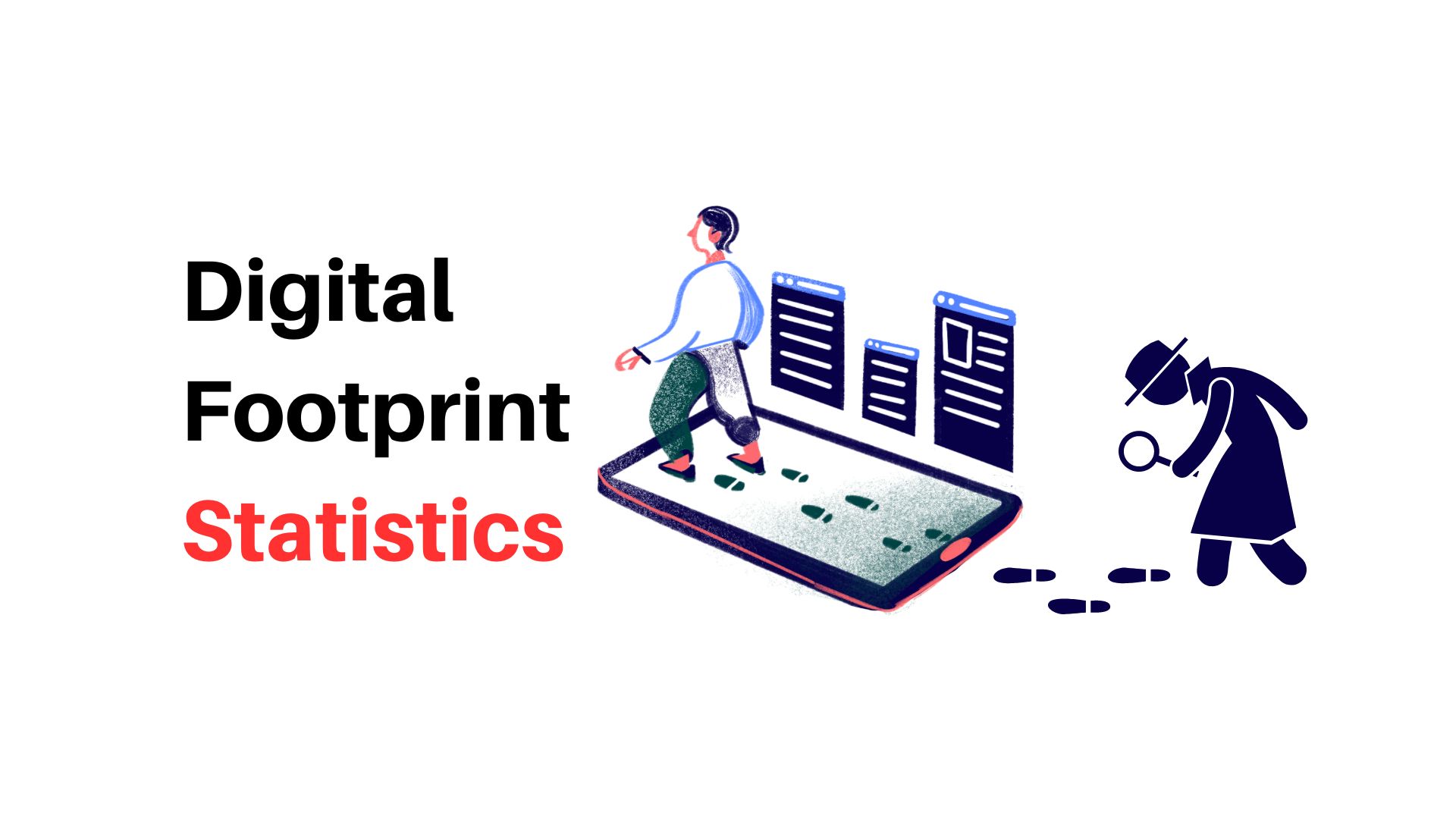
Page Contents
- Introduction
- Editor’s Choice
- Examples of Digital Footprint
- General Digital Footprint Statistics
- The Impact On The Environment By Social Media
- By Digital Population
- By Mobile Connectivity
- By Reasons To Use Internet
- By Types Of Websites And Apps Used
- By Data Protection Laws
- By Ways Reducing Digital Footprint
- By Demographics
- By Country By Average Daily Time Spent
- By Steps Taken To Protect Digital Information
- By Ways The Internet Is Being Used
- Conclusion
Introduction
Digital Footprint Statistics: The perfect example of a digital footprint is similar to walking in a snowy place, leaving your footprints behind. Here, however, it refers to every activity performed by the user being recorded by the internet. Whether you download any app or sign up for any newsletter you are leaving a digital footprint of you. Not only this, commenting, sharing, liking or positing or sending emails, and browsing also are some examples of this term. In the digitalized world, it is difficult to maintain distance from the internet and safeguard the identity, however, this is the most crucial part when it comes to footprint protection.
Let's understand some Digital Footprint Statistics along with some examples of this term.
Editor’s Choice
- 98% of information thieves are more likely to open new email accounts when a credit card is stolen.
- As of Q2 of 2023, South Africa, Brazil, and the Philippines were the top countries with the highest time spent online by users resulting in 9.29 hours, 9.25 hours, and 9.07 hours respectively.
- In 2023, most users spent their time online finding the required information resulting in 57.8%.
- According to the Digital Footprint Statistics, 6 out of 10 people prefer to use the internet to find information they need.
- There are more than 500 companies in the USA that sell user data available across the web.
- As of October 2023, the total population on the internet represented 5.3 billion while on social media alone it is registered to be 4.95 billion users.
- 69% of Americans own social media accounts out of which 47% believe their data is protected by these companies.
- The lifetime of an individual Digital Footprint Statistics represents 10,680 shared Facebook posts, 9,369 liked Instagram Stories, and 8,911 tweets.
- 50% of social media users prefer to keep their online profile public.
- Around the world more than 7,000 languages are spoken however, 50% of those do not have a digital footprint. However, according to Digital Footprint Statistics, there is no operating system, keyboards, or font available in the language.
- In 2023, the population on the internet mostly used chat and messaging-based apps (94.8%), social media networks (94.6%), and search engines or web portals (81.8%).
- Digital Footprint Statistics state that, an individual who is currently 76 years old and has used social media for 145 minutes every day, then it becomes 5.7 years spent on these platforms till his current age.
Examples of Digital Footprint
Social Media
- Login to social media accounts from electronic devices
- Online chatting with friends or family
- Sharing videos photos, or any other information
- Signing up for any app
- Giving information to third parties such as logging into gaming accounts through social media accounts
Online Banking
- Purchasing or selling stocks
- Logging into mobile banking
- Applying for a credit card account
- Subscribing to financial newsletters
Online Shopping
- Subscriptions to newsletters by brands
- Creating an account or using coupons
- Downloading shopping apps
- Transacting on eCommerce websites
Health and Fitness
- Using any app trackers that collect personal information
- Providing email ID at various places such as gyms for membership
- Allowing apps to receive healthcare notifications
- Subscribing to fitness and health-related newsletter
Subscription
- Reposting, liking, or commenting on the information
- Signing up for various newsletters
- Subscribing to online news apps
- Viewing news articles on the app
General Digital Footprint Statistics
- According to the Digital Footprint Statistics, 6 out of 10 people prefer to use the internet to find information they need.
- Around 86% of Americans have tried to remove their information from the internet considering their digital footprint.
- 50% of social media users prefer to keep their online profile public.
- There are more than 500 companies in the USA that sell user data available across the web.
- 79% of Americans are worried about companies violating their online privacy.
- 98% of information thieves are more likely to open new email accounts when a credit card is stolen.
- Around the world more than 7,000 languages are spoken however, 50% of those do not have a digital footprint. However, according to Digital Footprint Statistics, there is no operating system, keyboards, or font available in the language.
- 69% of Americans own social media accounts out of which 47% believe their data is protected by these companies.
- On the other hand, 9% of users do not trust these companies voting it as “Very confident”.
- 95% of Americans have no trust in online shopping ads and recommendations.
- According to Digital Footprint Statistics, on average a user spent 6 hours and 41 minutes online every day in 2023.
- 70% of Americans are unaware of the purpose of VPN services.
- According to a survey mentioned on Dashlane, online security is more important for 39% of consumers and they are ready to give up sex in exchange for enhanced online security.
- 52% of digital users take precautions about posting on social media to avoid a digital footprint.
- According to Digital Footprint Statistics, 73% of users are more likely to be loyal to a brand if they do not protect their data.
- 31% of internet users have regrets about posts they have posted online.
- When researching or stalking someone, 55% of users only view the first page of results on the internet.
- 14% of users have faith in the personal email addresses of business professionals they communicate with.
- 44% of internet users are unaware of their digital footprint.
- 79% of online users have a habit of reusing passwords on all of their accounts.
- More than half of the internet traffic is generated through mobile devices resulting in 53.3%.
- Digital Footprint Statistics 2023 states that 65% of internet users have at least once experienced an online security incident.
- Considering the digital footprint behavior, 80% of employers assess candidates based on their social media profiles.
- Furthermore, 61% of employers verify a candidate’s qualifications on social media profiles.
- While you are reading this, at least 60% of people on Earth are using their mobile phones.
- As studied by Digital Footprint Statistics, 47% of people look up their information on the internet.
- Around 77% of Americans are known of the fact that personal information is collected through online ads.
- As of 2022, the average cost of a worldwide data breach is $4.35 million.
The Impact On The Environment By Social Media
- Emails sent on the Internet represent the generation of CO2 which is equal to 7 million cars on the road.
- Considering the per minute CO2 generation for every active user it stands as follows: TikTok (2.63 grams), Reddit (2.48 grams), Pinterest (1.30 grams), Instagram (1.05 grams), Snapchat (0.87 grams), Facebook (0.79 grams), LinkedIn (0.71 grams), Twitter (0.60g), Twitch (0.55g) and YouTube (0.46g).
You might wonder what is the relationship between social media, CO2, and carbon emissions. Well, the reason is, some researchers say that every time a user logs into the account, the energy created by fossil fuels is used which creates greenhouse emissions and heats the atmosphere. Moreover, storing and transmitting data emits carbon.
By Digital Population
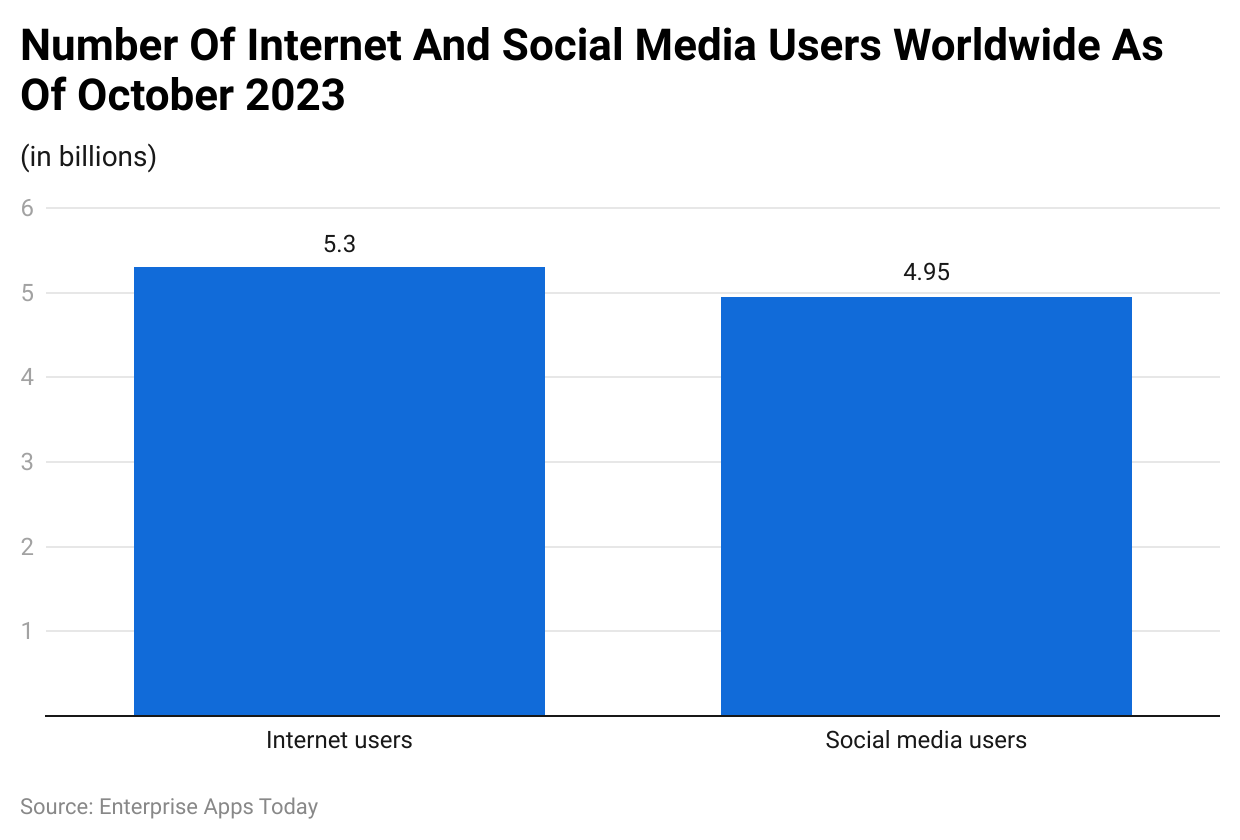 (Reference: statista.com)
(Reference: statista.com)
As of October 2023, the total population on the internet represented 5.3 billion while on social media alone it is registered to be 4.95 billion users.
By Mobile Connectivity
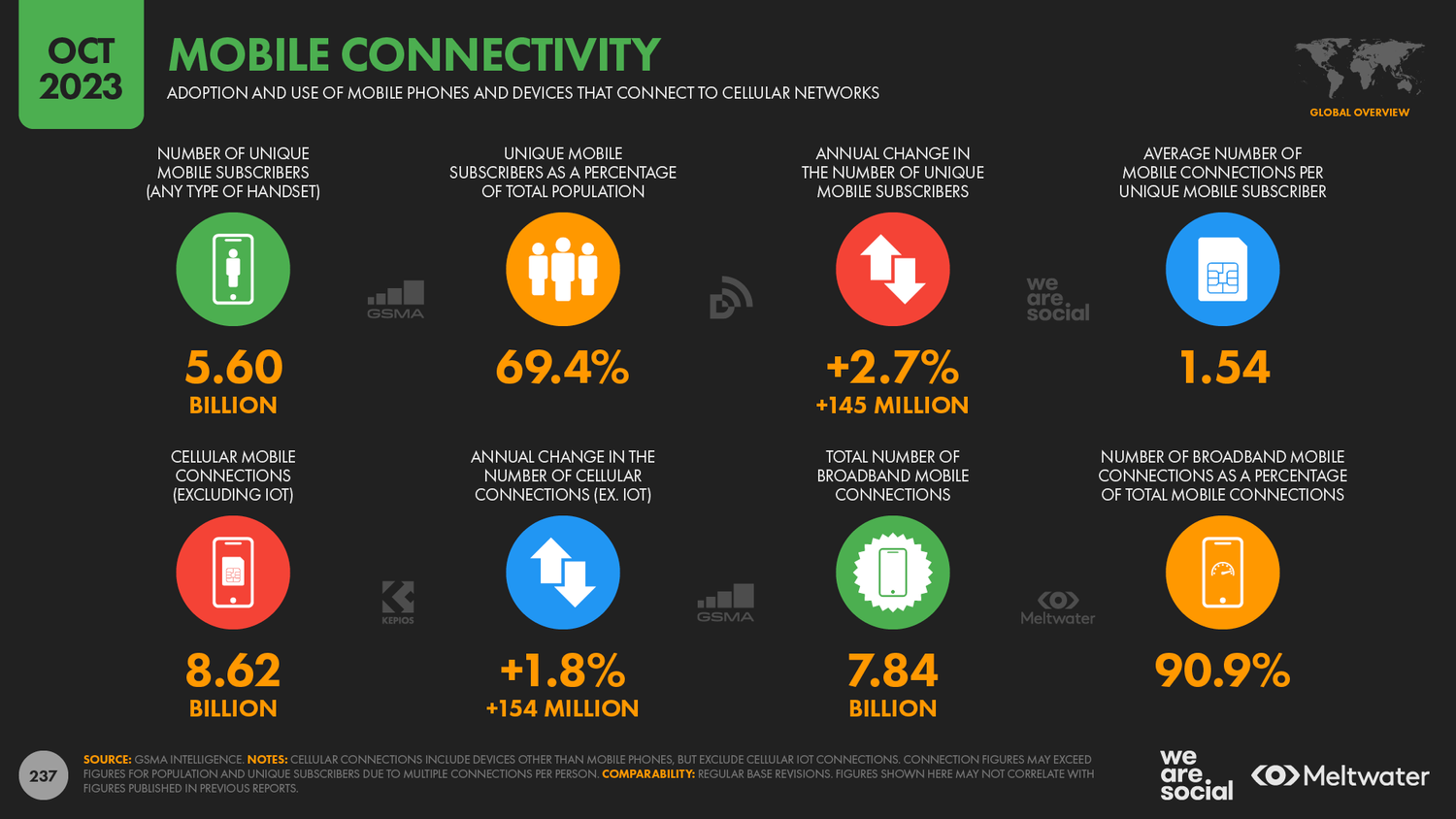
(Source: datareportal.com)
As of October 2023, there are 5.60 billion mobile connections around the world, however, 69.4% is the total number of unique mobile connections which is compared to the total population around the world. Overall there is an increase in the number of mobile users every year.
By Reasons To Use Internet
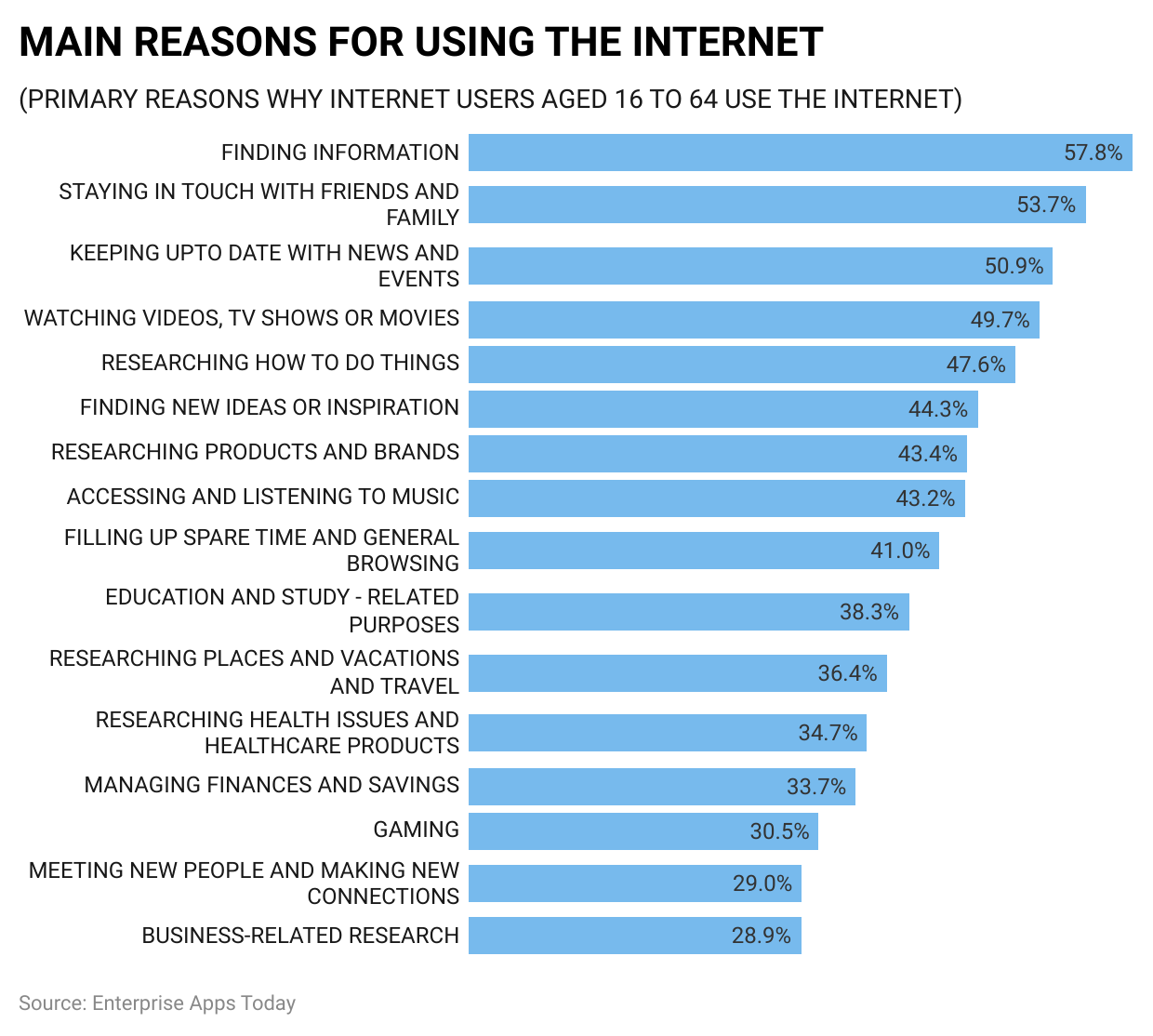 (Reference: datareportal.com)
(Reference: datareportal.com)
As of 2023, most users spent their time online finding the required information resulting in 57.8%. Staying in touch with friends and family and reading or watching news or events are the other most performed internet activities by the users representing 53.7% and 50.9% respectively.
By Types Of Websites And Apps Used
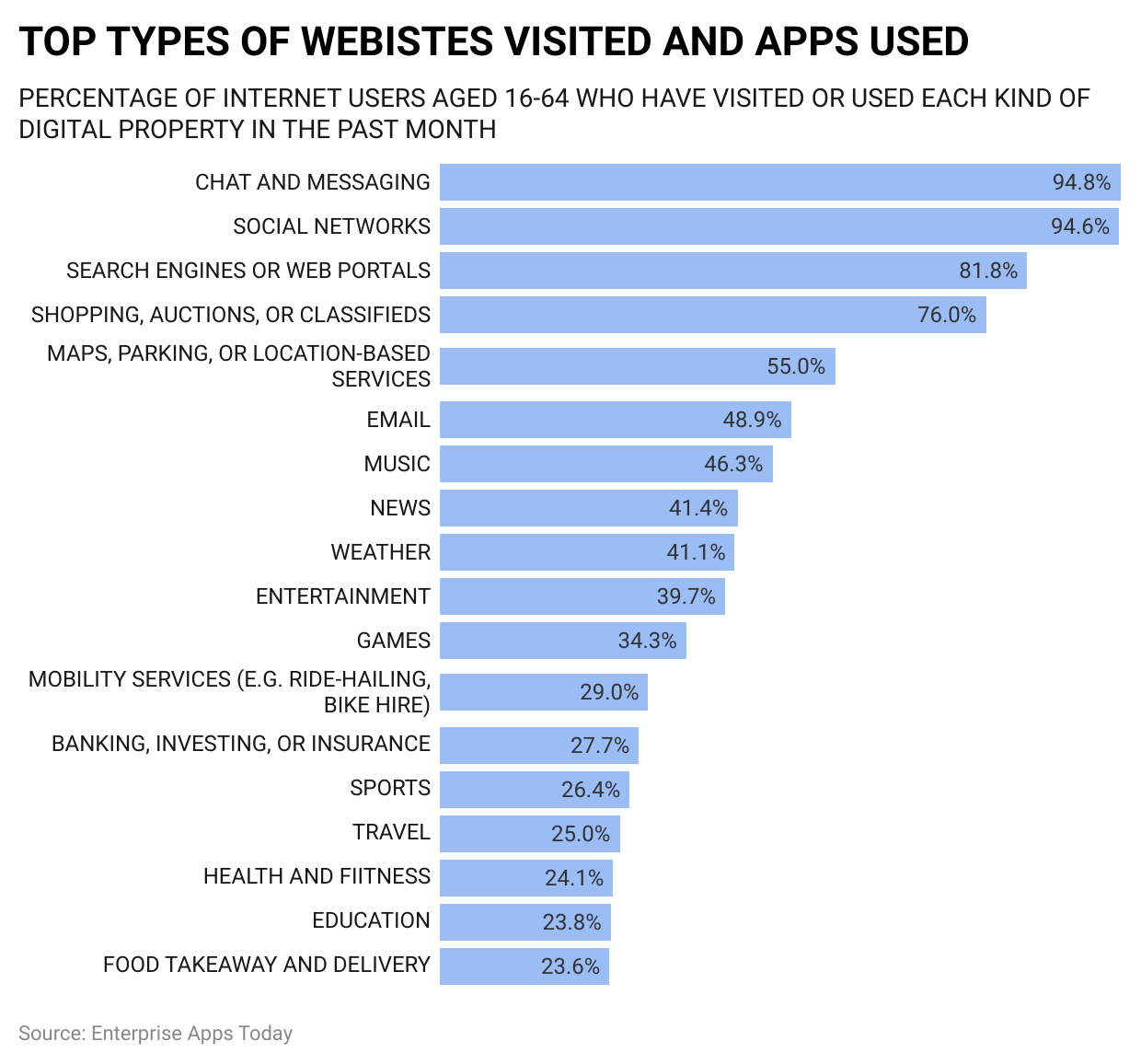 (Reference: datareportal.com)
(Reference: datareportal.com)
In 2023, the population on the internet mostly used chat and messaging-based apps (94.8%), social media networks (94.6%), and search engines or web portals (81.8%). Other activities performed on eh internet were shopping, sending emails, listening to music or news, weather, entertainment, playing games, and much more.
By Data Protection Laws
- In 2023, only 3% of Americans said they understood the workings of laws that regulate their online privacy.
- Around 107 countries in the world have adopted data and privacy protection laws.
- 45% of users say that protecting the data is the responsibility of the federal government while 24% said it is the individual responsibility.
By Ways Reducing Digital Footprint
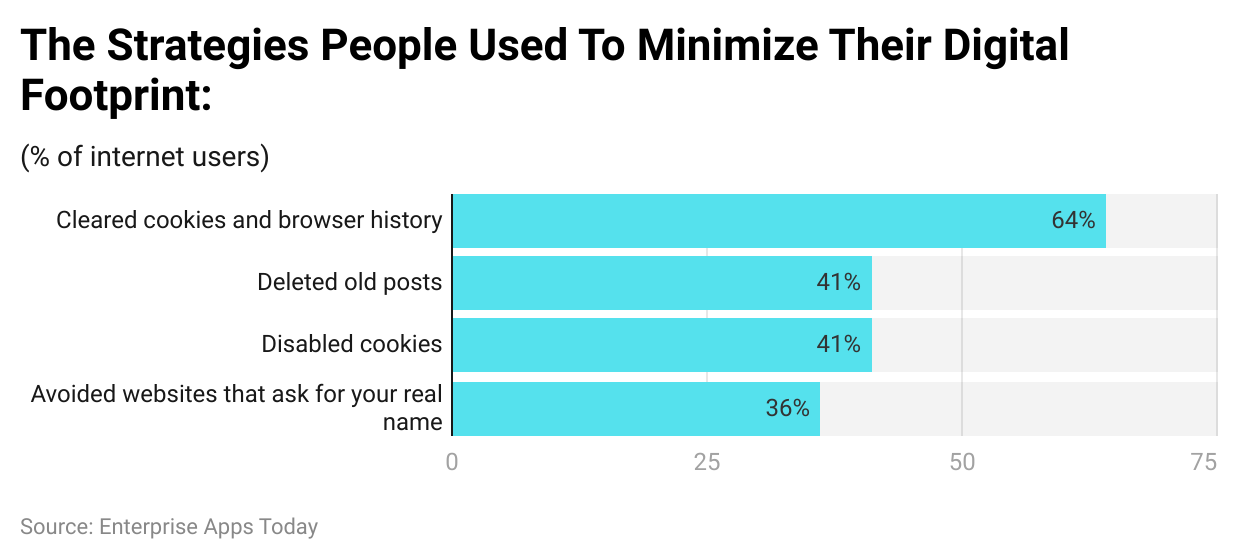
(Reference: vpncentral.com)
Out of all the internet users, 64% of them clear cookies and browser history, while 41% delete old posts and disable cookies. Furthermore, 36% of users prevent visiting websites that ask for personal information such as real name. All of these steps are taken to reduce the digital footprint.
By Demographics
By Daily Time Spent
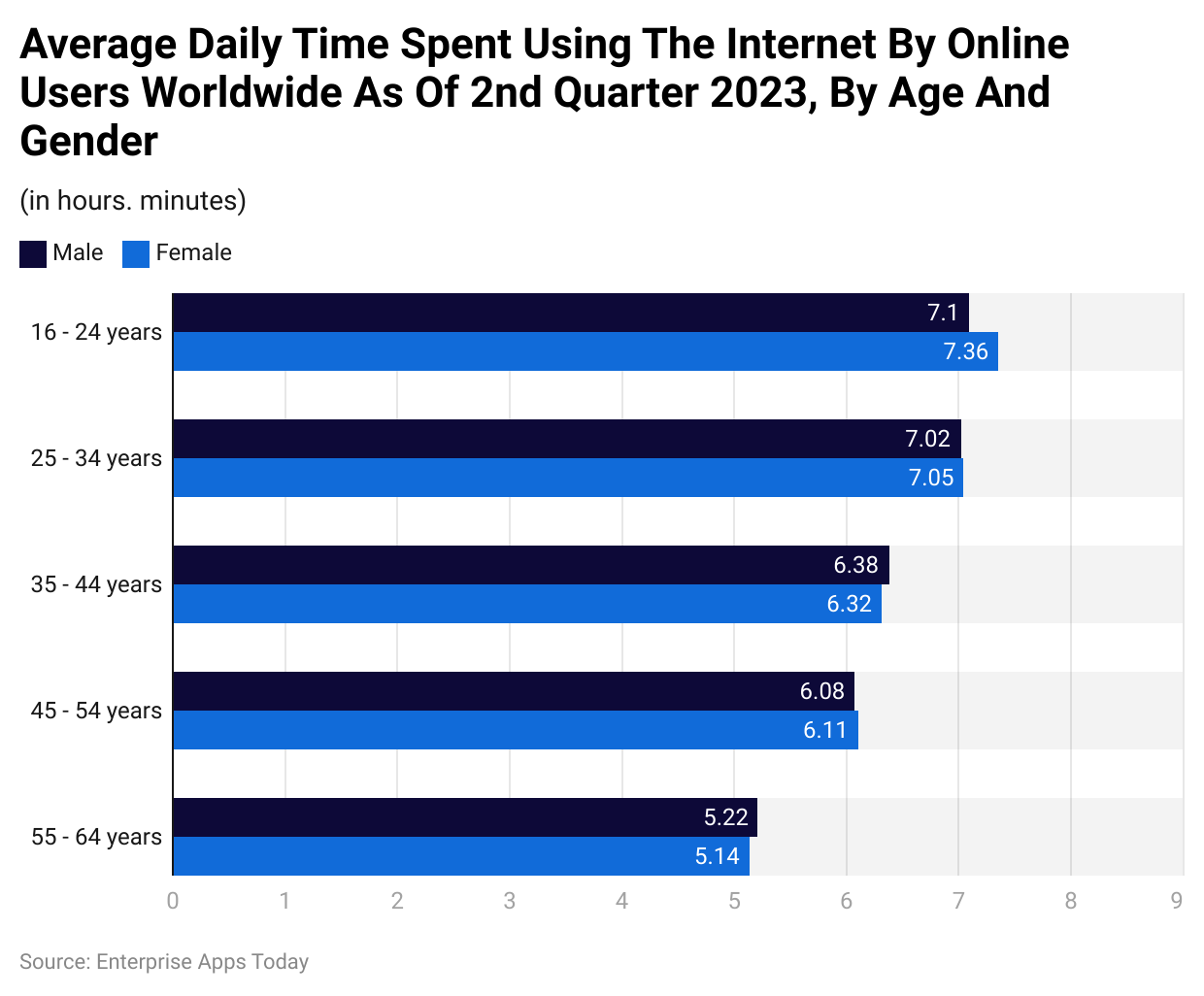 (Reference: statista.com)
(Reference: statista.com)
Out of the digital population, most of the time is spent by users aged between 16 to 24 years and 25 to 34 years, of this, female represents a greater proportion resulting in 7.36 hours and 7.05 hours respectively. On the other hand, female users aged 55 to 54 years spent comparatively less time online resulting in 5.14 hours.
By Country By Average Daily Time Spent
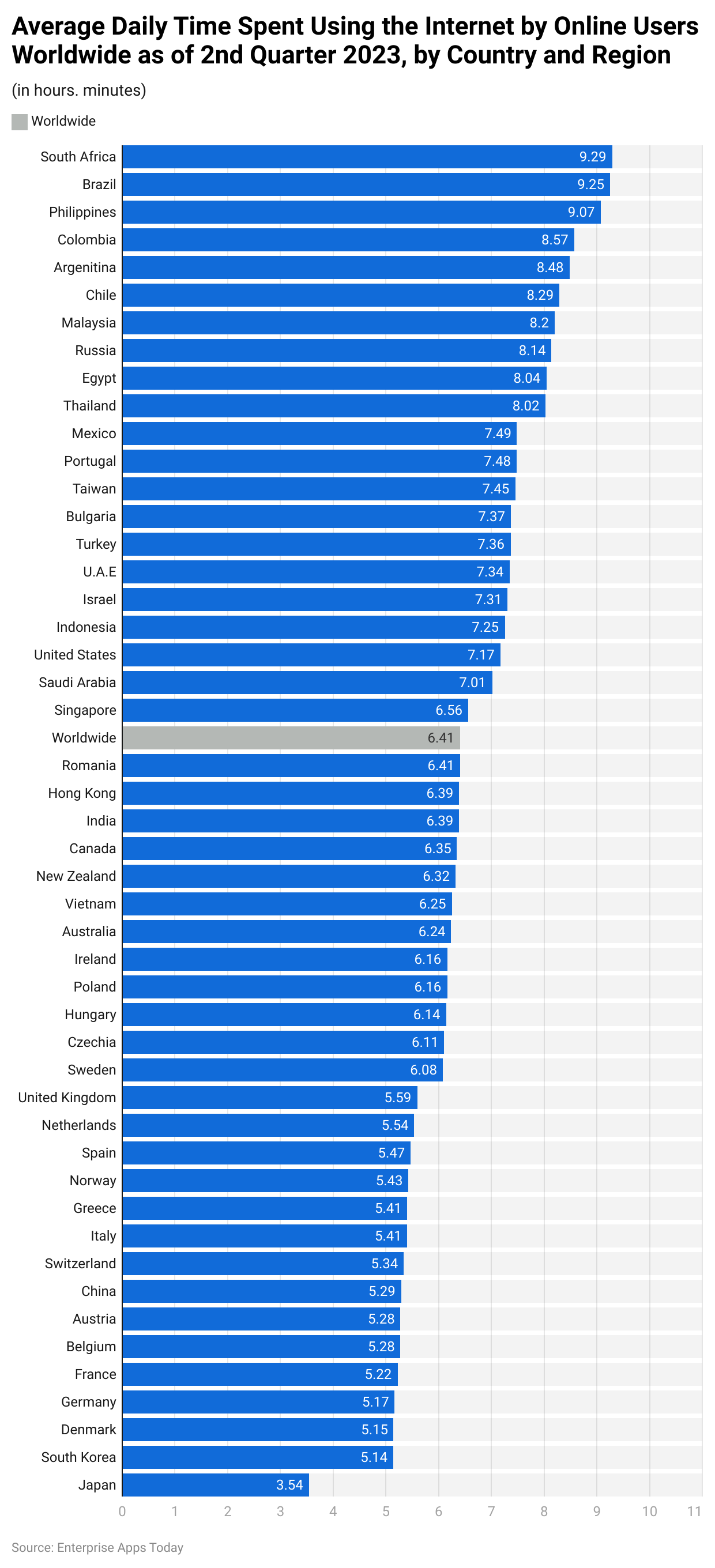 (Reference: statista.com)
(Reference: statista.com)
As of Q2 of 2023, South Africa, Brazil, and the Philippines were the top countries with the highest time spent online by users resulting in 9.29 hours, 9.25 hours, and 9.07 hours respectively. On the other hand, the lowest time spent countries included the names of Japan (3.54 hours), South Korea (5.14 hours), and Denmark (5.15 hours). The global average of time spent on the internet represents 6 hours and 41 minutes.
By Steps Taken To Protect Digital Information
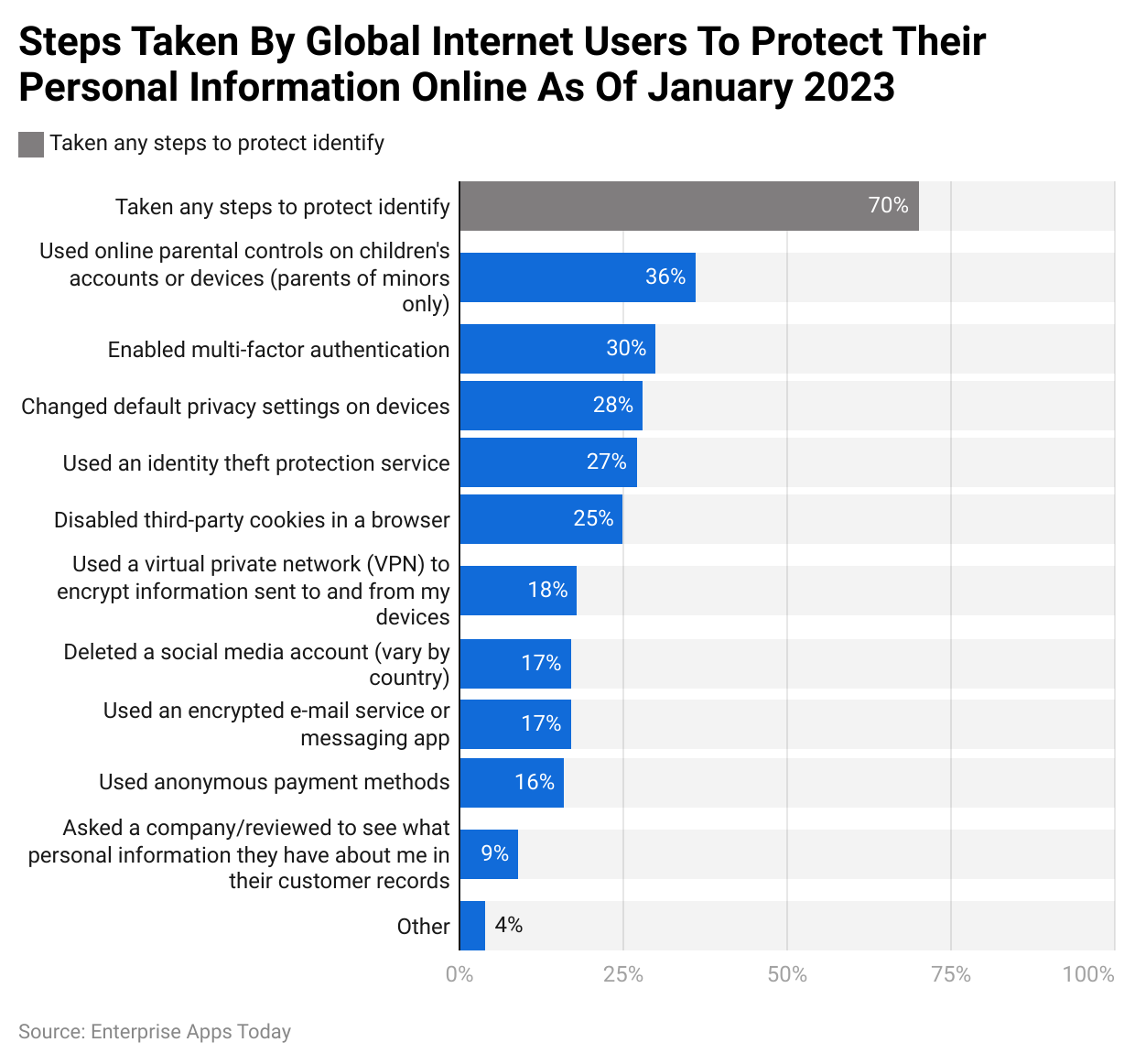
(Reference: cookielawinfo.com)
According to the Digital Footprint Statistics 2023, around 70% of the digital population has taken steps to protect their online information. As a result, the majority of them enabled multi-factor authentication (30%) and the parents of minors switched on parental controls on the devices (36%). Other ways that users protect their information are changing default privacy settings, using identity theft protection services, disabling third-party cookies, deleting social media accounts, and much more.
By Ways The Internet Is Being Used
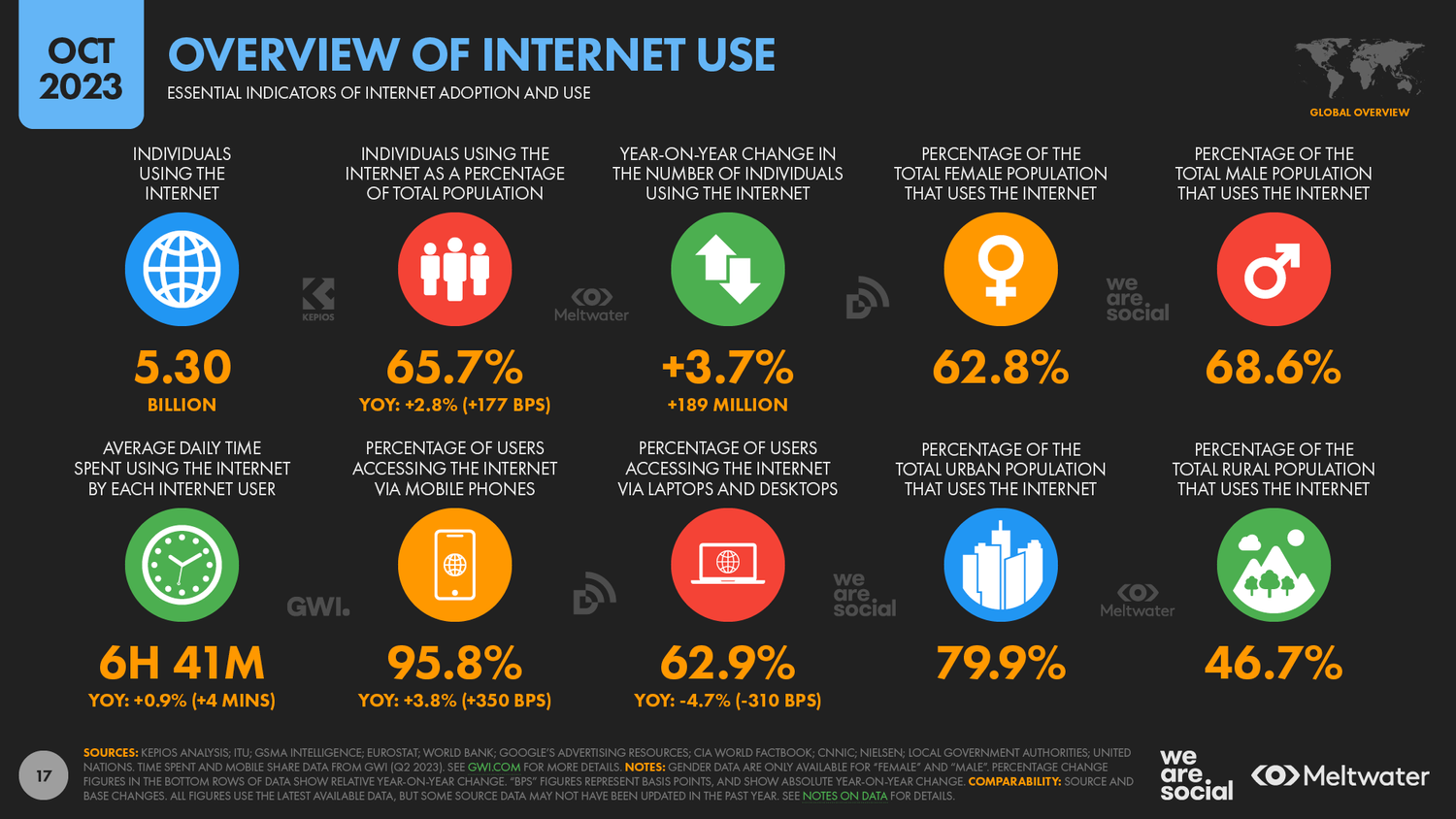
(Source: datareportal.com)
As of 2023, the internet is used by and in many ways. With continuous digital developments, there can be seen a continuous rise in the overall numbers year on year. Moreover, the use of the internet via mobile devices has tremendously increased since the last decade resulting in 65.7% of total users.
Conclusion
Once you go to any app or website on the internet, you are about to leave your footprints. This is when your online privacy gets hampered. Currently, billions of people use the internet every day for various reasons, however, unknowingly, they sign up for unnecessary newsletters, and applications and like or comment on the post. That shows, where you have been on that particular day.
It is important to understand these Digital Footprint Statistics and safeguard your online activities. Merely deleting the browsing history or browning from incognito mode won’t make much difference until you know how your digital footprints are used to steal information.
Sources
FAQ.
Digital footprint refers to the history or trail left by the users before leaving the internet activity. It includes the activity performed on the internet such as liking, posting, commenting, sharing, submitting, or sending.
Protecting the online identity can be performed in the following ways:
- Do not post private photos or videos.
- Live life privately.
- Avoid Adding strangers to social media accounts
- Switch on multifactor authentication
- Keep changing passwords every 3 months
- Avoid subscriptions to unwanted apps or websites
Email sent, or received, photos, videos, liked or commented posts, shared information, or any other information submitted online is collected through digital footprint.
Once accounts are created, the information is stored on the company’s server. Deleting accounts is not much of use. However, it will still give some privacy to your life.
Use a variety of passwords for every account, regularly update software, delete old and unnecessary accounts, avoid going to unsecured websites, search yourself, and ask the relevant authorities to delete the information in case of any identity theft. This way digital footprint can be avoided to some extent.

Barry is a lover of everything technology. Figuring out how the software works and creating content to shed more light on the value it offers users is his favorite pastime. When not evaluating apps or programs, he's busy trying out new healthy recipes, doing yoga, meditating, or taking nature walks with his little one.


